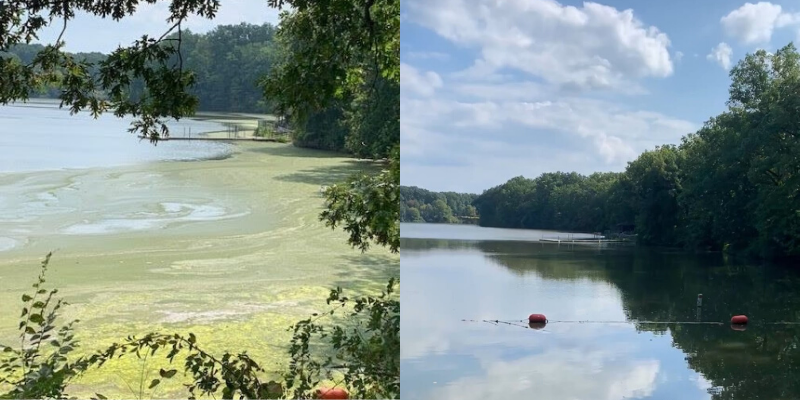An independent quality control testing laboratory has validated NCCOS research findings on nanobubble ozone technology (NBOT), confirming it is highly effective in controlling algae, bacteria, and motile zooplankton in ship ballast water. The independent validation is a significant milestone toward future use of the technology to eliminate invasive species in ballast water tanks onboard Great Lakes vessels.

The Great Waters Research Collaborative at the University of Wisconsin-Superior’s Lake Superior Research Institute (LSRI) released its final technical report on a bench-scale evaluation of a commercial 2.5-horsepower pump NBOT (NBOT 2.5-HP) system, supported by NCCOS research. The evaluation is the first to assess NBOT as a ship ballast water treatment method for invasive species control in the Great Lakes.

The NBOT technology uses cavitation to generate ultrafine microbubbles (nanobubbles) containing ozone. These nanobubbles harness the unique biocidal power of ozone and place it into a safe delivery mechanism that is highly effective but also ensures human and environmental safety. The resulting ozone nanobubbles and bi-products (hydroxyl radicals and a number of peroxides) eliminate a wide range of polluting chemicals such as pharmaceuticals, endocrine-disruptors, nitrates, steroids, as well as herbicides, pesticides, and microbial toxins.
The LSRI testing confirms the ability of NBOT to kill organisms such as bacteria, green algae, and zooplankton in ballast water over time. In addition, residual toxicity testing examined the potential for ballast water treated with NBOT 2.5-HP to cause toxicity to organisms in receiving water upon discharge. No statistically significant effects on growth, survival or reproduction were seen.
For use to eradicate active algal blooms, nanobubbles can retain ozone for long periods of time (days to weeks) resulting in extended water treatment with low levels of ozone. Successful algae-eliminating pilot tests at Lake Okeechobee’s Port Mayaca Lock, Lake Newport, Ohio, and Constitutional Gardens in Washington, DC, have demonstrated that NBOT need only treat a small percentage of the total water volume to obtain effective results. Unlike other algae mitigation (biocidal) treatments, NBOT is “green,” leaving no legacy chemicals such as metals or chlorides behind, highlighting the environmentally sound characteristics of this technology. The observable footprint of post-NBOT treatment is added oxygen to water that is typically anoxic or oxygen poor.

The precise infusion of ozone into nanobubbles is a patented technology that was selected and tested in a laboratory setting by NCCOS’s Dr. Peter Moeller at the NCCOS Charleston Lab and is being transitioned to operation through a Cooperative Research and Development Agreement between NOAA’s National Ocean Service and the American Marine University Research Institute. A demonstration project to test water quality measures is planned this summer in Florida’s Loxahatchee River District, and a project to reduce nutrient input to Lake Erie is planned for next year in Ohio’s Maumee River.
Read the full report here. For more information, contact Peter Moeller.
